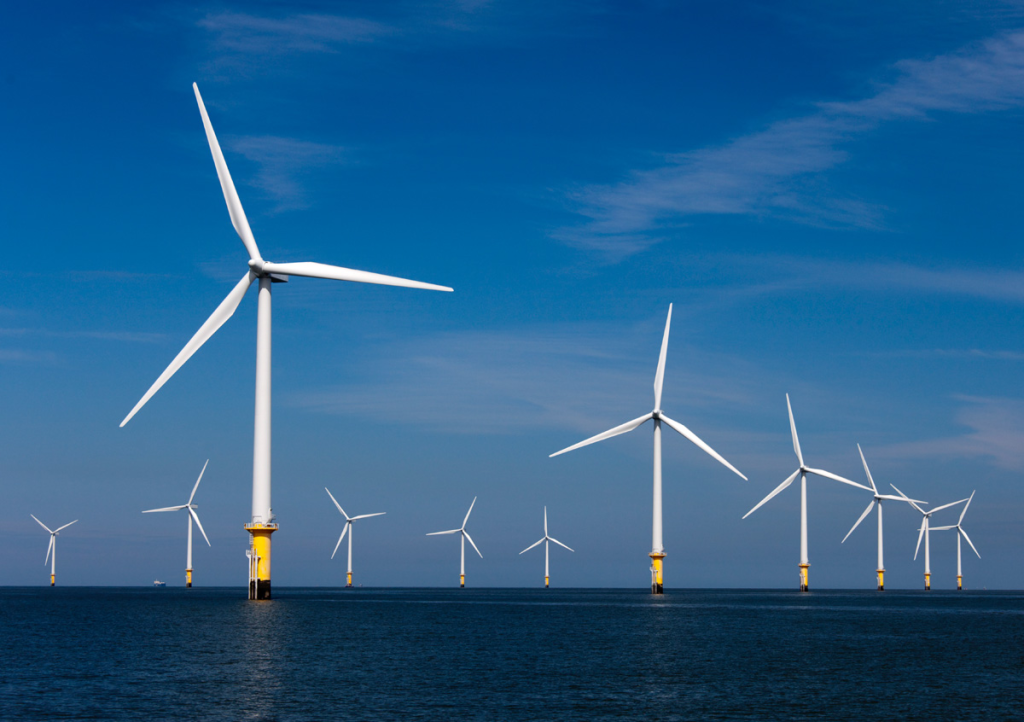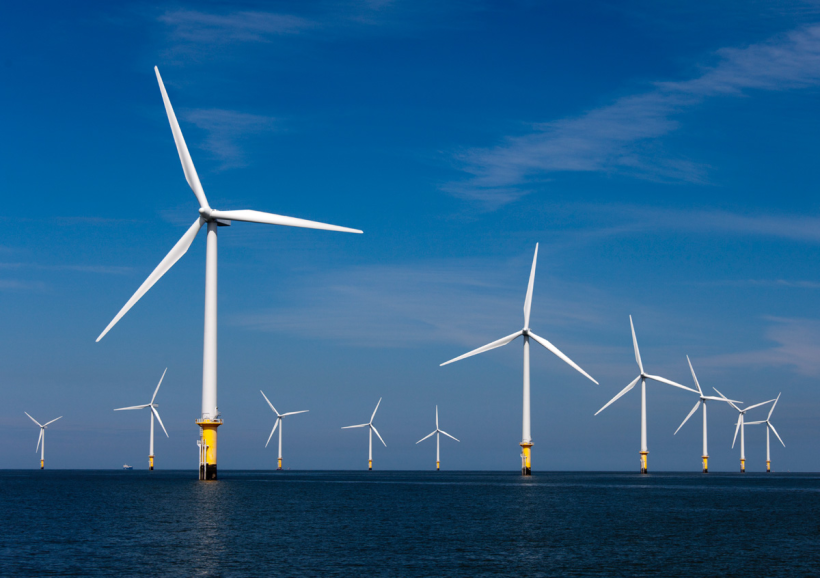
Offshore wind “turbine” farms are pretty much exactly what they sound like…large farms of wind “turbines” located offshore, out in the ocean (although, the correct term would be something along the lines of an airfoil-powered generator, as the turbine is just one part of the overall assembly). These farms provide an excellent source of “wind energy” through an innovative means of power generation. To properly convey how these turbines generate power in a relatively concise manner, we will look at the flow of energy from the surrounding atmosphere all the way through to the final end product, from the prospective of a simplified model.
Initially, we have wind blowing (in this case, across the ocean’s surface), which carries with it some amount of kinetic energy. When this air (or working fluid) comes into contact with the blades of the “turbine”, it imparts forces (or a load) to the blades of the “turbine”, which are most often shaped as asymmetric (lacking symmetry) airfoils. Due to the shape of the airfoil, the applied wind load is resolved into components in various directions, labeled lift and drag. The combination of these wind load components will tend to turn the blades, thus transferring the wind’s kinetic energy into rotational kinetic energy for the blades. This rotational energy is then transmitted from the blades into the shaft, through the rotor hub that connects the blades to the shaft. Now, the shaft is connected into a gearbox with a high speed ratio, so that (through changes in gear size) the output shaft from the gearbox is rotating far faster than the original input shaft into the gearbox. Finally, the output shaft from the gearbox is connected into an electric power generator (typically an induction generator), in which the spinning shaft rotates along with an attached rotor, relative to a stator. This relative motion provides the driving force for the generator to induce an electrical current, which can then be sent through a transformer (which amplifies/increases the voltage to the distribution voltage) to a collection point for combining the power being generated by all of the “turbines” in the farm. From here, the generated power can be either delivered directly to the end user or be sent to an electrical substation for further processing. Lastly, you might be thinking ‘so why don’t I see most of these components?’; the reason for this, is that most of these components (along with some additional electromechanical devices for optimizing “turbine” efficiency) are hidden with a nacelle, which is then connected to a tower, within which most of the electrical transmission lines are stored.
So there you have it: a simple look at how wind “turbine” farms convert the mechanical energy associated with the wind into the electrical energy that can be used to power the very device that you are using to read this post!

